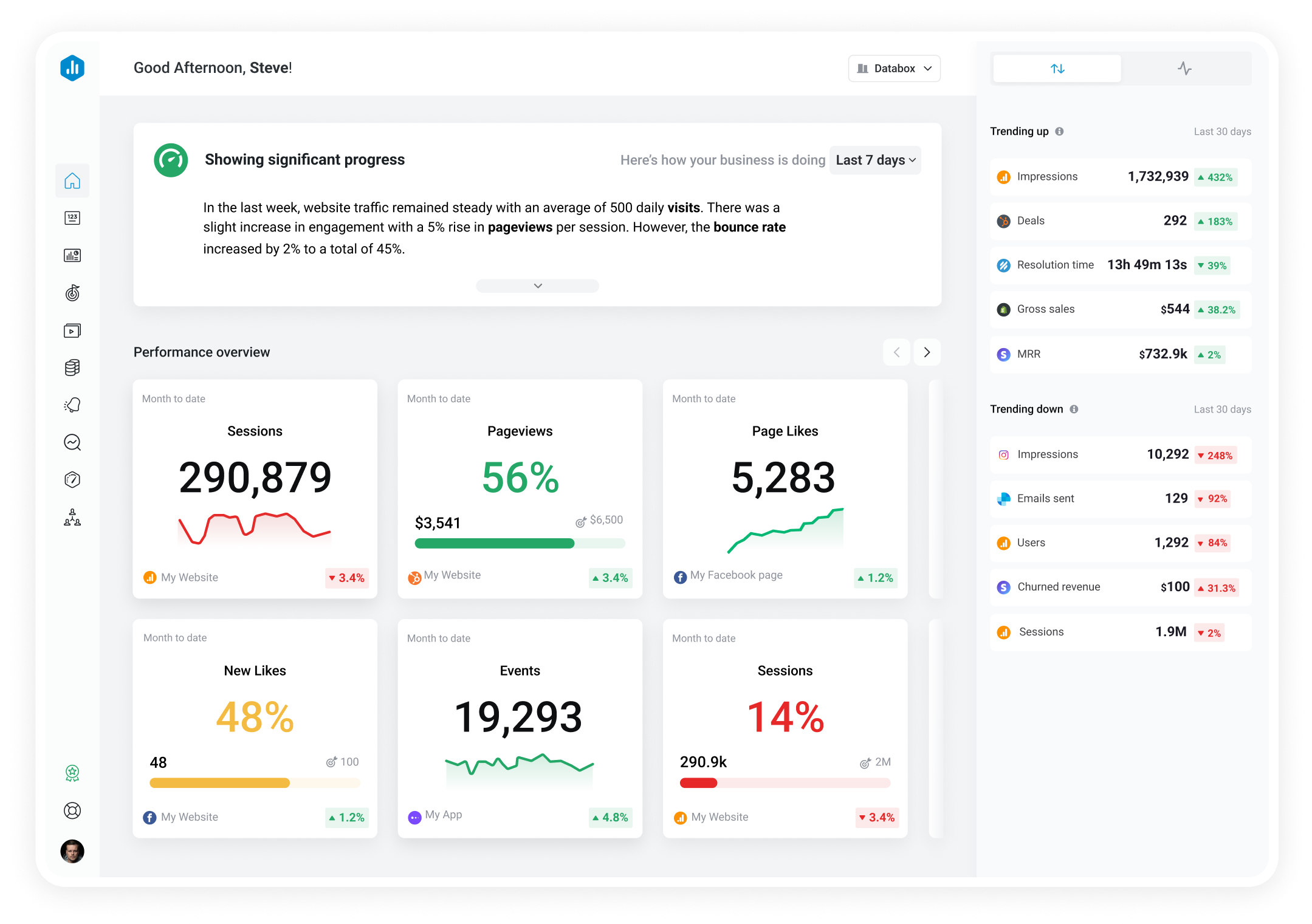Track all of your key business metrics from one screen
GET STARTED
 QuickBooks
Income (Cash) by Category
QuickBooks
Income (Cash) by Category The Income (Cash) by Category metric in QuickBooks shows the total revenue received within a specific category over a selected time period, providing a clear picture of the sources of income for a business.
With Databox you can track all your metrics from various data sources in one place.

Used to show comparisons between values.
Databox is a business analytics software that allows you to track and visualize your most important metrics from any data source in one centralized platform.
To track Income (Cash) by Category using Databox, follow these steps:
 Goals
Goals Scorecards
Scorecards Metric Digest
Metric Digest Metric Builder
Metric Builder Data Calculations
Data Calculations Performance Screen
Performance Screen
This report gives a snapshot of financial results using QuickBooks data on income, expenses, cash flow, balance sheet, and overall financials, supporting informed financial decisions.

Quickbooks Metric ‘Income’ might not return any values in Databox if its renamed in the connected Quickbooks account (for example to ‘Revenue’ or ‘Total Revenue’).
The following setup should be applied in the Quickbooks account under ‘Account and Settings’: Company type should be set to Not sure/Other/None (Databox does not support syncing data for the Non-Profit Company type account setting), and industry should be left blank (this needs to be done at least for the non-profit entities).
With these settings, the report subtitles will automatically be set as ‘Income’ and ‘Total Income’, and Databox will sync data for the metric as expected.
